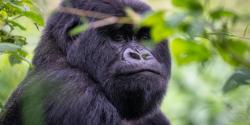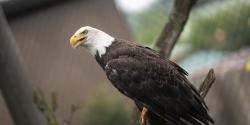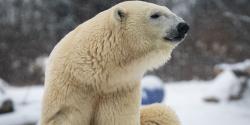If you put aside how many people love to visit the rhinos at both the Columbus Zoo and The Wilds, why should we care about rhinos, and what are we doing to save them worldwide?
After elephants, three of the five rhino species, including the greater one-horned rhinos (GOHR) and white rhinos, are the largest species of land mammals.
- All rhino species are threatened, but the black rhino, Javan, and Sumatran rhinos are critically endangered. There may only be 74 Javan rhinos and less than 80 Sumatran rhinos left in the world!
- The critically-endangered black rhino has about 5,630 individuals remaining. The GOHR is vulnerable with a population of about 3,600 that is slowly increasing. Threats to GOHRs include shrinking habitat, invasive grass species that choke the natural vegetation that they feed on, and monsoons that are more damaging to habitat than ever before due to climate change.
- While white rhinos are Near Threatened with a declining population of about 18,000, one subspecies, the Northern white rhino, is down to only two, both females, remaining. Threats to rhinos are similar to those of elephants–poaching for rhino horn, human-rhino conflict, especially in agricultural areas, and less suitable habitat.
Why are they important? Like elephants, rhinos are keystone species. They have vital roles in shaping the landscape for thousands of other species as they are also grazers, browsers and seed dispersers. And, they are important for tourism in their native countries, too.
The Columbus Zoo and The Wilds have always taken an active role in rhinoceros conservation. We developed three 3-year rhinoceros partnerships for field conservation projects. We will provide privately raised funds as well as staff support.
- In India, we will work with the International Rhino Foundation (IRF) to support rhino protection through law enforcement, translocations, and community development. Our staff will assist with education and outreach activities.
- In Nepal, we will work with the National Trust for Nature Conservation. This project supports rhino monitoring, veterinary support, and a community awareness program in Chitwan National Park. We will provide technical assistance in the wildlife hospital, including wildlife care and handling, disease diagnostics, and capacity building.
- Drawing on our 30 years of conservation work in Rwanda, we will support Akagera National Park (Akagera Management Company)’s Eastern black rhino reintroduction effort. This includes providing uniforms and rations for rhino patrol units. We will participate in the planning process and provide messaging to share Akagera’s conservation projects, community work, and outreach.
And that’s not all! The Wilds is one of the founders of the new multi-institution American Institute of Rhinoceros Science (AIRS). AIRS will focus on rhino research in human care, especially reproduction. Not only will these studies be critical in increasing and genetically managing rhino populations in zoos, but they may also serve to improve the management and survival of rhino species in range countries. The AIRS operations will be based at The Wilds and include a research coordinator and intern.
The next time you visit, know that your support and the support of the teams at the Columbus Zoo and The Wilds are ensuring that rhinos will be around for generations to come!










